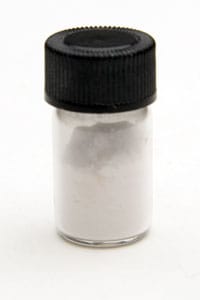GHB is a common term for gamma hydroxybutyrate, a chemical found naturally in small amounts in the human brain and also produced synthetically in pharmaceutical laboratories. In the U.S., local and national laws heavily restrict the drug’s use, and doctors can only legitimately prescribe it to ease symptoms of a sleep disorder called narcolepsy. However, significant numbers of people use the drug illegally in settings that include concerts, parties and clubs; for this reason, the drug belongs to an unofficial category of substances known as “club drugs.” Because of certain effects it has on normal human health, GHB is also known as one of the quintessential “date rape” drugs.
The Basics
Inside your brain, GHB occurs naturally as a byproduct of the formation of gamma aminobutyric acid (GABA), a neurotransmitting chemical that plays an important role in normal communication between individual brain cells. Pharmaceutical companies first produced manmade GHB as a form of general anesthetic; however, the drug proved unreliable and never gained any real popularity in this context. At one time, some bodybuilders also used the drug because of its reputed ability to increase internal production of human growth hormone. The U.S. Food and Drug Administration started monitoring and restricting GHB’s use in the 1990s. GHB has no color or odor, although it does have a taste that faintly resembles the taste of salt; according to the National Institute on Drug Abuse, certain forms of the drug are also tasteless. Depending on factors that include size and chemical purity, a dose of GHB can contain anywhere from 1 to 5 grams of the drug. Purity and dosage size also determine the length of time it takes for the drug to take effect (roughly 15 minutes to half an hour), as well as its period of activity (anywhere from three to six hours).
Varying Effects
Inside the brain, synthetic GHB chemically binds itself to the same cell locations (known as GHB receptors) that respond to the presence of naturally occurring GHB; the drug also binds itself to other brain cell locations called GABA-B receptors. The binding actions of GHB increase the levels of certain vital brain chemicals, while simultaneously decreasing the levels of certain other brain chemicals. The overall effect of this activity is depression of normal function in the brain and spinal cord (central nervous system); the degree of this depression varies according to dosage. In users who take doses of the drug smaller than 1 gram (roughly the weight of a paper clip), common effects include muscle relaxation and a sense of liberation from common social inhibitions. In users who take GHB doses between 1 and 2 grams, common effects include an increased sense of mental relaxation; significant decreases in normal breathing and heart rates; impaired control of normal balance and body movement; and decreases in normal blood circulation. In users who take 2 grams of GHB or more, potential effects include serious or severe impairment of normal speech and muscle control. High doses of GHB can also produce symptoms that include nausea, vomiting, unconsciousness, amnesia, abnormally low blood pressure, abnormally low heart rate, serious or severe breathing problems, vertigo, seizures, delusional thinking, hallucinations, and depressed emotional states. In extreme cases, high GHB intake can also produce a coma or death; the risks for these dire or fatal outcomes rise when users of the drug simultaneously use alcohol, opioids, or other substances that also decrease central nervous system function.
Role in Sexual Assault
As noted previously, high doses of GHB can produce both unconsciousness and amnesia. The type of amnesia associated with GHB use, known as anterograde amnesia, can erase an affected individual’s ability to remember anything that happens while he or she is under the drug’s influence. Unscrupulous predators in social environments sometimes slip GHB into the drinks of unsuspecting individuals, perpetrate some form of sexual assault after unconsciousness occurs, then rely on the effects of retrograde amnesia to cover their tracks and give them a fraudulent defense against accusations of criminal conduct. The ease of GHB use for these purposes is increased by the drug’s minor taste, or, in some cases, complete lack of taste. People who purposefully abuse GHB expose themselves to the same risks for sexual assault and other forms of violent or invasive conduct on the part of others.
Additional Considerations
The vast majority of the GHB in the U.S. is made illegally in uncontrolled circumstances; as a result of this situation, the vast majority of recreational abusers cannot accurately gauge the chemical purity of any given batch or dose of the drug. In addition, no one knows for sure if any given batch or dose of GHB contains other dangerous or potentially toxic substances. Therefore, in real-world terms, the true effects of the drug are inherently unpredictable and abusers can mistakenly take amounts of GHB that lead to incapacitation or the onset of serious or fatal health complications. They can also experience unexpected effects completely unrelated to the chemical actions of GHB.

